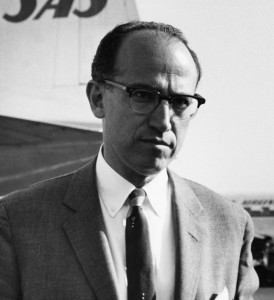
The list runs in reverse order, from mildly frightening to truly scary.
10. The Coming Ferret Invasion. Alternative title: The Unprepared Will Be Doomed. Earlier this year, I predicted that Whitewater would experience a massive invasion of ferrets. Why? Because I correctly guessed that New York City would not lift its ban on ferret ownership in that city. In consequence, the aggrieved, hidden ferrets of the Big Apple are sure to decamp for  another location.
another location.
Whitewater, of course.
In my estimation, they were supposed to be here by mid-October, but perhaps they’re walking more slowly than I’d calculated.
In any event, there’s a way to protect ordinary, decent residents from the rodent takeover. (It’s mistaken to say that this website does not offer solutions to problems. It often does. I would also
remind officials of Whitewater that the easiest way to avoid problems is not to take actions that cause problems.)
Here’s how to protect Whitewater against thousands of invading ferrets. First, find a city official who has time on his hands. That’s the easy part. Second, station that official miles from Whitewater, in a rural location between here and the ferrets’ path. Third, as these small, voracious mammals approach, it will be the official’s job to associate a picture with food, happiness, etc., in the ferrets’ minds. That way, they will seek the location in the picture, and avoid residents’ homes and businesses. The entire advancing horde will congregate only at the location depicted in the photograph.
I’ve just the place in mind:
Problem solved.
9. Key People. I heard a presentation recently where the presenter tried to reassure others that she would seek the input of key people. There are no key people – at least not in a way that makes it worth using the term. There are only key ideas. All the rest is an attempt at flattery or an expression of insecurity.
A group of supposedly key people is no match for one ordinary man or woman with a key idea.
8. One’s Own Words. They must be scary; one hears them so seldom. There are a few who think that somehow they’re better off relying on poorly written and poorly read publications than speaking and writing on their own. That’s a mistake. Servile papers and websites will not prove enough, anymore; the readership dynamic in this city shifted irreversibly against their publications.
(Actual traffic measurements of various publications are nothing like how insiders or publishers want to portray them; realistic measurements show how far insiders’ publications have declined or stagnated, and how much others have gained. One can be very confident about the future in this regard.)
Talented people – including many officials individually – are simply throwing away their opportunities when they rely on publications markedly inferior to their own abilities.
7. Potholes. They must be scary, because we’re avoiding them, and spending more on big projects than we’d need for simple street repair.
6. Gaps. The greatest republic in human history (ours) grew in liberty and prosperity though careful examination of projects and ideas. We did not develop word-class technologies by believing ‘close is good enough’ on engineering or fiscal projects. When, however, someone asks that American standards be applied to Whitewater’s projects, officials whine that identifying gaps is unfair, nitpicking, etc.
In what society do they think they live, for goodness’ sake?
America is great, in significant part, because she – unlike foul Third World autocracies, for example – expects high standards from her leaders and their proposals.
5. Open Government & Temporary Amnesia. Every public body has a website, on which they publish every big boast, but somehow these same officials can’t seem to remember how to post key public documents prominently. They seem to forget, but only temporarily and selectively.
4. WEDC money. Not just worthless – it is – but worse: a diversion of resources from far greater needs. The many poor in this city get nothing from this money.
3. Data. Presenting scores in a realistic context is harder for Whitewater’s school administrators than facing a pack of savage wargs.
2. Filth, Scum, and the Flimsy Scheme to Bring Them to the City. I’ve a series about this, in WHEN GREEN TURNS BROWN. There’s a burn-the-village-to-save it quality to waste importation as a means of revenue. (And yet, the sadness here is that the entire digester-energy project was unnecessary, and the obloquy it brings being wholly deserved for being unforced.)
1. The Ethical Indifference of Act Utilitarianism. Some of the large public institutions of this city show time and again that they care more about their reputations – and that means the reputations of their leaders – than the health and safety of their ordinary members.
The worst example of this has been the repeated downplaying of violent assaults against women on campus while touting accomplishments that cannot, ethically, matter as much as those injuries. These have been self-protective, morally empty, and ultimately futile attempts at diversion and subject-changing.
A climate like this has invited and will invite further tragedies; the worst of this, sadly, surely is not over.
Other officials who allow subject-changing are, themselves, culpable of a supportive wrong. See, An Open Note to Leaders of the Municipal Government, the School District, and UW-Whitewater. It’s right and fair that officials who aid in diversionary conversations should be called out directly & specifically when they make that attempt.
For it all, we’ll get to a better city, consigning these ways to the dustbin.
There’s the 2015 list. We’re more than able to overcome these problems, for a stronger community.
Best wishes to all for a Happy Halloween.



 These town squires are so lost that the leading Democratic candidate for president, the member of a party that enthuses over economic intervention, still shows a better grasp business intervention than they do.
These town squires are so lost that the leading Democratic candidate for president, the member of a party that enthuses over economic intervention, still shows a better grasp business intervention than they do.
